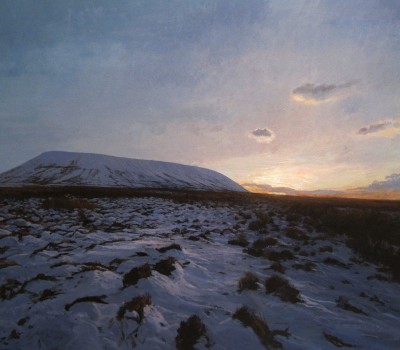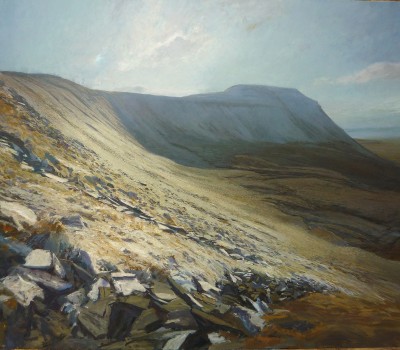- Pen Y Ghent Last Light Winter
- Sunrise whittenham clumps
- Winter Silence Pendle Hill
- Morning on the way to Walsingham
- Iona Beach Moonlight
- Landscape of the Vernal Equinox
- Bass Rock from Tantallon Castle
- Ingleborough, Winter frost
- Uist from Berneray
The 2011 show “A first avowed intent on pilgrim roads from Iona to St David’s” was three years of work, walking, researching, painting and drawing the pilgrimage places and sacred places of the British Isles.
The inspiration came from a visit to Lindisfarne. I noticed the footprints of pilgrims on the wet mud of the Holy Island sands. These prints, continually washed by the tide, obliterated, and then re established by the passage of new pilgrims were part of a cycle repeated daily for centuries. The fragile, temporary impressions connected me not only to the arrival of St Aidan in 635 and the coming of Christianity to Northumbria, but also to journeys of countless later pilgrims. These prints were the starting point of my own journey on pilgrim roads.
Pilgrim trails once connected the wild and remote places around our shore with the most populace. For centuries crowds journeyed this loose network to and from places of spirituality. Some of these locations are now totally unknown, but were, for a time important places not just in these islands, but in Europe. For these early travellers there may have been a therapeutic intention, to be activated by the contact with the miraculous relic or shrine. But I am sure the wonder, of entering a new experience, would have started sooner for the pilgrim, closer to the outset, for a pilgrimage may have allowed him his only opportunity to break free from his familiar and narrow environment and discover his own country by foot.









